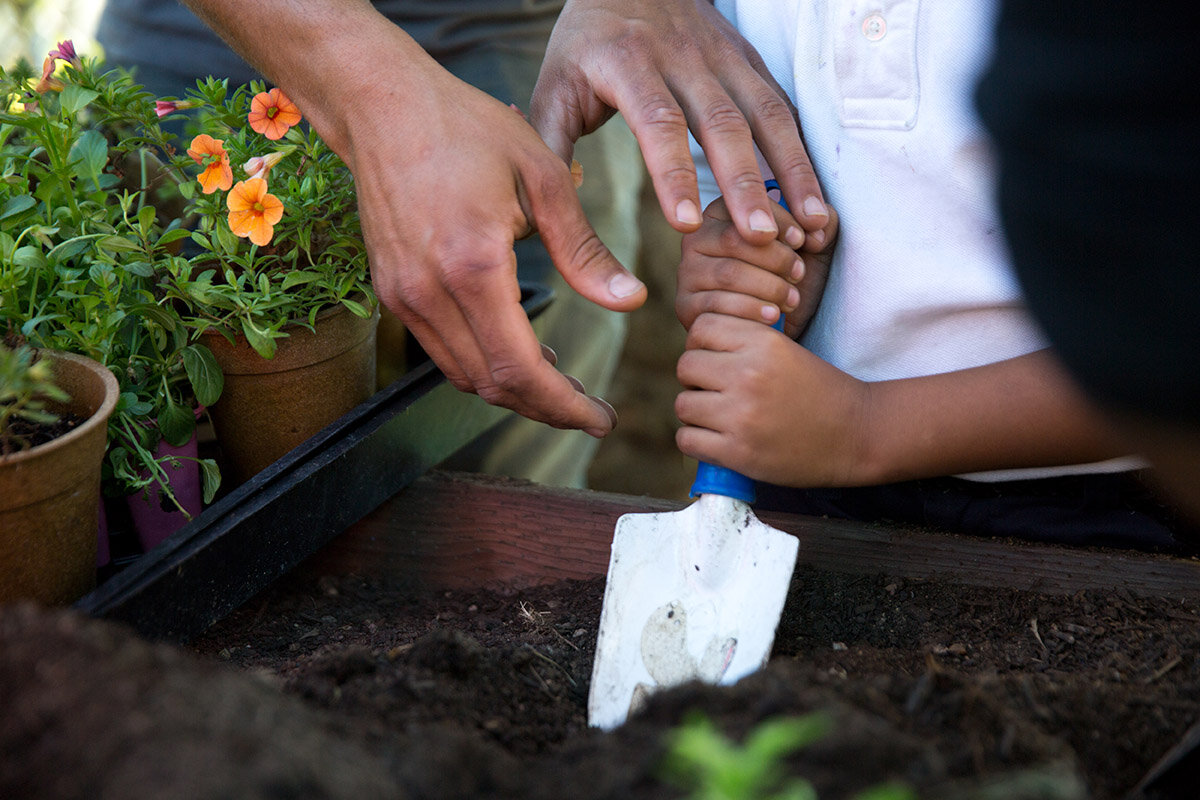Security for Outdoor Learning Spaces
Safety and security will most likely be one of the top priorities as schools return to campus and other settings for learning. Outdoor safety and security present a wide range of challenges to ensure successful use by staff, students and the community members. While each school and community has its own unique setting and circumstances, there are many issues to consider to support safe uses.
Review of Existing Conditions
The school planning team should look at each site to consider how best to review and identify potential features that may need adjustments to support safe use of the campus or learning areas. It is recommended that district administration staff (e.g. facilities, grounds, security) work with the principal, teachers, staff and community stakeholders to review how the campus is currently used, both during school hours, after school and weekends. Review current uses and programs as well as anticipated new efforts as part of the return to school. Here is a list of common issues to review:
Who are the staff responsible for inspecting or maintaining school grounds?
How is litter collected and removed from the campus grounds?
What is/are the anticipated source(s) of litter and is there potential to minimize the amount?
Has theft or vandalism been a common occurrence on campus, to what features, in which specific areas?
Are the school grounds fenced? Are there pedestrian access gates? Are there double-wide maintenance gates for service vehicles?
Are the areas that are used during school areas accessible currently?
Can the community currently enter the outdoor learning and play spaces during school hours? Are there signs addressing school hours?
Does the school or district currently use any cameras to monitor outdoor play and learning areas?
Where are the outdoor spaces used for drills (fire drills, safe gathering areas)? During planning, will new outdoor learning spaces impact routes to or size of gathering spaces?
Is the campus open and available for use on the weekends and holidays? Are there specific community uses or programs, such as off-leash dog walking, sports, and recreational activities?
Low and No Cost Solutions
Identify any issues and elements that need to be addressed by district or school Facilities Maintenance staff and make necessary requests for maintenance or repair.
Encourage participation of the school community and neighborhood stakeholders in the planning and development of new features to support outdoor learning, to have a sense of ownership in the spaces.
Add signage to designate school hours and any restrictions to campus uses (e.g. hours that campus is open for use, open for dog walking, who to contact to program spaces, and so on). You may need reminder signage for location of trash receptacles or to pick up dog waste, for example.
Encourage programming — formal or informal — of spaces after hours to encourage positive eyes on the campus. This may include COVID restrictions, appropriate exercise programs, scheduled time slots of volunteer garden maintenance, walking groups, and so on.
Work with staff and students to create art to add to new outdoor learning spaces, including fences, to provide positive messages, support curriculum themes and brighten the spaces.
Host volunteer work parties to help trim vegetation that may be creating hiding spaces, blocking views to new outdoor learning features or creating.
Moderate Investment Solutions
Partner with local artists to create artwork that reflects local culture, neighborhood style and generate a sense of pride in the community.
Invest in motion sensor activated lights deter unwanted uses.
Add trash and recycling containers if needed to meet demand, confirm staffing to maintain them regularly.
If nuisance wildlife is a concern, install buried wire fencing (such as thick gauge) around the perimeter of the space and make sure composts and natural areas are maintained to reduce attractions of unwanted animals. Make sure there are no habitat elements such as water or shelter.
Install durable storage to support outdoor learning features and materials that are not easily moved inside the building after hours. Consider these storage solutions.
Plant trees throughout the campus, as studies suggest that more natural areas may reduce unwanted behaviors, while improving health and academic performance for students.
Capital Investment Solutions
Install durable fencing or gates that provides desired security while addressing aesthetics that are welcoming (not high security). Black coated fencing may soften the aesthetic and not look as “institutional.”
With community input, consider whether installing security cameras could aid in tracking potential issues such as vandalism, possibly as part of district wide security program. Considerations should include whether the school and district can support staff to monitor cameras and recordings.
Install additional motion sensor or dimmable lights to encourage enough light for evening walkers and discourage unwanted uses after hours.
Move portable classrooms to block street noise, or winds, or to reorganize campus to better create separation between outdoor learning areas or connect outdoor learning areas to classrooms. Considerations may include visibility to student gathering and play spaces, sound, sun, wind, circulation patterns, water flow, and so on.
References and Resources
Kuo FE, Sullivan WC. (2001). Environment and Crime in the Inner City: Does Vegetation Reduce Crime? Environment and Behavior. 33 (3): 343-367.
Research by William C. Sullivan and Frances Ming Kuo shows that outdoor spaces with trees invite people to gather and create a sense of belonging, which in turn reduces crime and stress and violence (even domestic violence) and increases self-esteem. One of their studies found teenage pregnancy rates were less in apartment blocks with trees in the courtyard than in identical apartment blocks with no trees.
R. H. Matsuoka. (2008). High School Landscapes and Student Performance. (Landscape Architecture. (Doctoral dissertation). University of Michigan.
A study by Rodney Matsuoka on 100 Michigan High Schools found that student disorderly conduct and student crime was lower on campuses with trees and gardens breaking up large spaces and that were adjacent to active streets (fits with Jane Jacobs’ eyes on the street theory) than on campuses with wide open spaces even if those spaces were living grass.
What Is CPTED and How Can It Help Your Community?
— Bureau of Justice Assistance, National Training and Technical Assistance Center, July 10, 2014
Crime Prevention Through Environmental Design (CPTED) is a proactive, community-led process to find solutions
CREDITS - UPDATE
This article was written by Tamar Barlev, SFUSD; Jane Tesner Kleiner, nature+play designs; and Nancy Striniste, EarlySpace.
It was reviewed by Claire Latane, Cal Poly Pomona; Christina Vassallo, MSN, FNP-BC; Sarah Gill, MPP; and Betsy Ukeritis, New York State Department of Environmental Conservation.
National COVID-19 Outdoor Learning Initiative
The National COVID-19 Outdoor Learning Initiative supports schools and districts around the country in their efforts to reopen safely and equitably using outdoor spaces as strategic, cost-effective solutions to increase physical distancing capacity onsite and provide access to abundant fresh air. The Initiative seeks to equitably improve learning, mental and physical health, and happiness for children and adults using an affordable, time-tested outdoor approach to keeping schools open during a pandemic.









